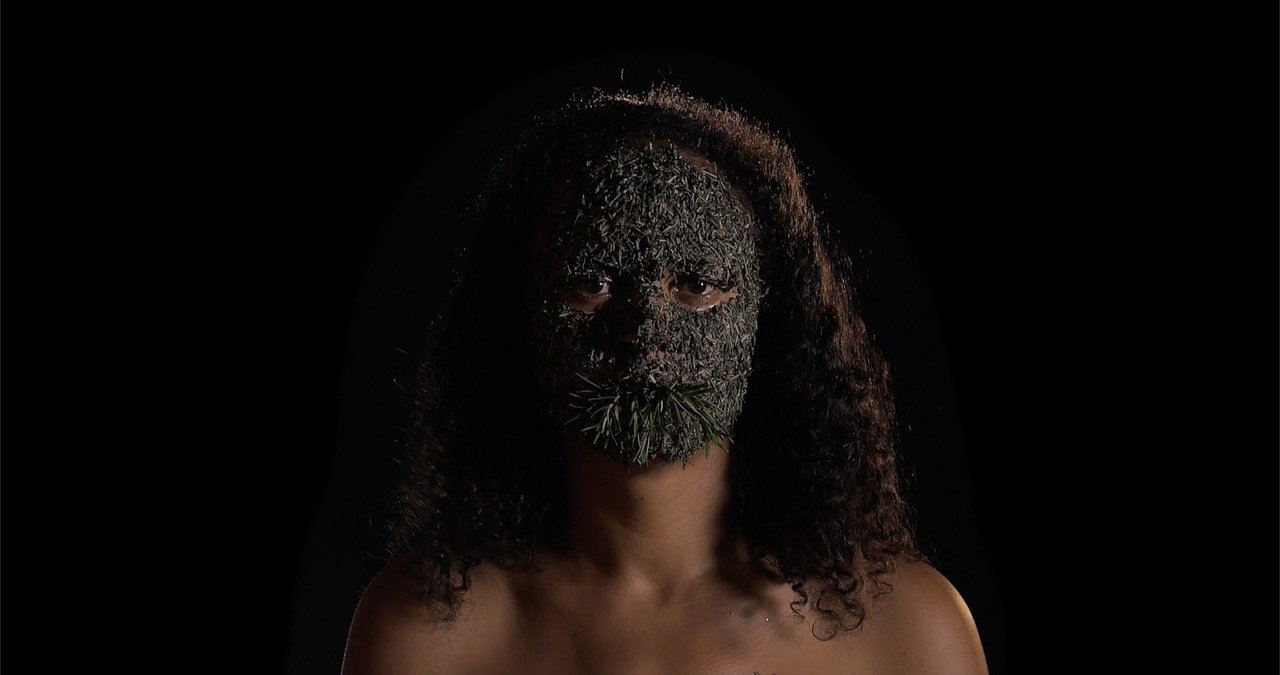Patrick Bongoy, Ghost Memory
Thania Petersen, Free the DRC
Maritea Dæhlin, I want to be TRADITIONAL
Helena Uambembe, Here Lies the Unknown, 2018
Community over Clout
Artists: Effo Munguanzo, Helena Uambembe, Maritea Dæhlin, Rudy Nzongo, Thania Petersen
Hosted by Patrick Bongoy and Rafiki
Main Gallery - 25.04.24 - 06.06.24
In the era of social media, an opportunity to create content and gain celebrity status is available to virtually anyone, anywhere. Provided that they have access to smartphones, power sources, and the ability to read of course. The ever-influential Black vernacular of hip-hop directed the meaning of the word ‘clout’ to define this kind of fame that could easily lift one from existential obscurity, poverty, and misery to wealth and admiration through a large following (seemingly) overnight. Now that anyone can quickly gain visibility and monetise their online presence, the question for all of us is not so much how to become influential in the world, but rather, what kind of influence one has, on whom, and for what purpose.
Similarly, African art has risen from the shadows of the colonial global creative economy to widespread acknowledgment and rising value within markets that are increasingly rooted on the continent. Seeing the growth of multiple dynamic African art scenes, from Marrakech to Lagos and Cape Town, the question is no longer whether art made by African artists is considered authentic artistic expression by Western standards, but rather what kind of influence the acknowledgment of African art in the global North provides for African and diasporic artists, who profits from the commodification of African art and culture, which audiences are catered to and to what end.
Social media and business are inseparable, and as with any other relationship, it comes with some complications. In the world of internet celebrities, content makers, and influencers, ‘clout chasing’ has emerged as the ultimate vice. Cardi B, the US rapper of Trinidadian and Dominican heritage, comments on this in her cameo in the Offset song ‘Clout’ (2019) when she says ‘everybody wanna be lit, everybody wanna be rich’ and ‘they using my name for clickbait’. She talks about being used by social media outlets and their content makers for marketing purposes. One could argue that ‘everyone’ wants a piece of the African art pie, but are they willing to pay equitably for it?
Despite the possibilities presented by rapid growth in the contemporary African art market, African artists are still facing an emerging, elitist and somewhat inaccessible singular financial model as a source of revenue and valorisation for their work. Without the existence of artists’ trade unions or other forms of support systems, African artists are often isolated and vulnerable in negotiations about wages, copyright, visas and other fundamental rights.
As much as social media fame has contributed to the dismantling of power hierarchies in the accessibility of art, many have sadly discovered that internet fame does not always translate into art sales. Although social media has contributed greatly to connecting local and international audiences with art made by Africans and people of African descent globally, artists have come to understand that fame does not automatically equate to a fair share of income in the art ecosystem.
Following their legitimisation in the West, African artists are rightfully drawn into global discourses on art’s relevance in the face of environmental crisis, political conflicts, and war amidst massive digital innovation. However, there can be a discrepancy of interest that often marginalises African artists whose voices sing a different tune or, rather, who draw a different (unapologetically African) picture. While the Western art world is preoccupied with the reckoning of multiple systemic faux pas of the past, African and diasporic art ecosystems are faced with local and regional challenges relating to the psychological boundaries that are still isolating communities via ethnic, religious, social and economic barriers.
Do contemporary art institutions empower African and diasporic artists to shape multiple narratives of Africanness, or are we compelled to go along with Western-centric notions of our continent and its development? Can the continental philosophy known by its various names – including Ubuntu in isiXhosa, Kimuntu in Kikongo, or Utu in Kiswahili – and the values embedded within it, provide an alternative foundation on which individual and collective needs can be built simultaneously and equitably? Can ‘community building’ in the spirit of Ubuntu become the antithesis of ‘clout chasing’?
The exhibition presents the works of artists of African heritage based on the continent and its diasporas. This project insists on the need to seek out modes to conserve various communities’ beliefs, practices, and traditions, and to promote their model of sustainable preservation. The offering in this exhibition emerged as a collaborative effort through a series of conversations between the participating artists and the exhibition hosts, Rafiki and Patrick Bongoy, pre-, during and post-pandemic. The artists shared thoughts on a range of topics, including the politicisation of identity, cultural and identity transformations, global interconnectedness, and the role of artists in contemporary inter-African social awareness, solidarity, and community building across African and Afro-diasporic localities.
Text by Rafiki
Effo Munguanzo, Unititled






